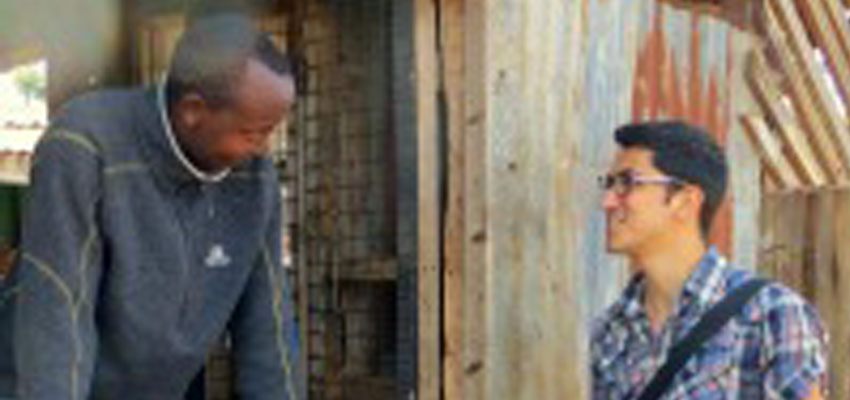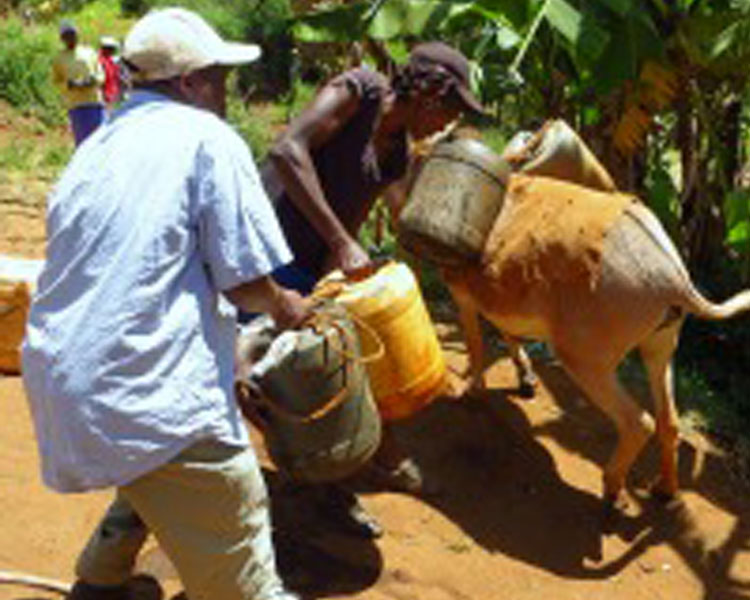
This research, made possible by a gift from Greif, will help understand issues faced in transporting, storing and treating water in Kenya in an efficient and healthy manner.
I’m currently in Kenya with fellow D-Lab staff members Benji Moncivaiz and Kendra Leith, to learn about water-related needs faced by Kenyans. Through interviews, observation, focus groups, immersion, and co-design sessions, we seek to understand needs, gather feedback on current water transport and storage methods, and solicit reactions to less familiar products. In true D-Lab fashion, we left our assumptions at home, and are taking a hands-on and experiential approach to our work.
Through our on-the-ground partner, we have been connected to community members in Mitaboni and Katalembo in Machakos County and Ndeiya and Limuru in Kiambu County, who are eager to share. They have taken us to their water sources, encouraged us to try common (and in our eyes, extremely difficult) ways of transporting water, and have been forthcoming with feedback on other methods they have tried.
At major water sources, we have observed people transport water with jerrycans on their backs, wheelbarrows, bicycles, donkeys, and a variety of carts. When visiting water kiosks in Ndeiya, we realized that men had a much larger role in water collection than we had originally thought. A number of men came with donkey- or hand-pulled carts to fill their 200 liter drums with water for household use or to resell.
We came to Kenya with a variety of existing technologies for transporting and storing water – some designed for camping use, discovered during a visit to Eastern Mountain Sports in Cambridge – and bought jerrycans and buckets of different sizes locally. In Nairobi, we connected with Wello and were able to borrow their WaterWheel for use in our work, and we also came with Greif PackH2O backpacks. The primary intended use of these technologies is to introduce them to focus group participants, to understand key features for potential transport and storage options. However, when our water storage tank ran empty last week, we didn’t want to pass up a good opportunity to gain some first-hand experience.
Collecting water from the borehole on the grounds (located about 90 meters from the tank), we filled the 50-liter WaterWheel, PackH2O, and a 20 liter Sea to Summit waterproof bag inside of a CamelBak backpack. When our hands were raw from lifting the container from the well and we were sufficiently muddy and wet, we switched to carrying and emptying a number of full storage containers into the tank. Over an hour-and-a-half, we added 400 to 500 liters to the tank, and gained new insights into potential use cases for these technologies, as well as some of the benefits and limitations of each. Our muscles were exhausted, but we were energized.
I really appreciate the approach to fieldwork that D-Lab has instilled in me from my time as a student, stressing engagement and participation, genuine connections and humility. Fieldwork always has its challenges, but with this attitude I am always learning and experiencing something new. I am excited to see what our remaining time in Kenya will hold.



